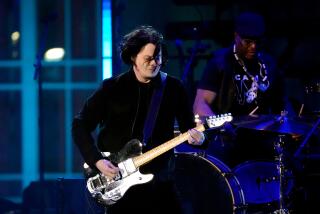Soviet Arts Festival Lured 600,000 During 22-Day Run : The Arts: Based on attendance, organizers call the event a success. Whether it will return $1 million to the city remains to be seen.
- Share via
Mayor Maureen O’Connor’s just-concluded Soviet arts festival was a huge popular success, drawing an attendance of 600,000, including 250,000 children who viewed exhibits free at their schools and elsewhere, festival executive director Bruce Herring reported Monday to the San Diego City Council.
About 218,000 tickets were purchased for everything from the drama “Brothers and Sisters” to the San Diego Museum of Art’s display of 27 Faberge Imperial Eggs. Others attended free events that included the opening ceremony, “Super Powers Sunday,” in Balboa Park.
O’Connor accepted congratulations for the 22-day event, which ended Sunday, from City Council members Judy McCarty and Bruce Henderson, but deflected credit to Herring and a 600-member volunteer corps who helped put on the show.
“As far as an organizational success, I’ve seen none better,” the mayor told Herring. “It wasn’t me, it was a lot of ‘we’s’ out there, and they should be proud and pleased,” she added. “And I will accept the compliments on their behalf.”
Meanwhile, O’Connor’s spokesman said Monday that he doubts that organizers will find a replacement exhibit for a collection of Soviet icons that was to be shown at a specially built site at the B Street Pier. The showing of the icons, 9th- through 19th-Century metalworks from the Soviet Republic of Georgia, was canceled less than a week before its scheduled opening because of political unrest there.
“It’s looking dimmer by the day,” said Paul Downey, the mayor’s spokesman. “The problem is finding something of quality to replace it with. We haven’t given up yet, but as I say, it’s looking dim.” The icon showing was scheduled to run from Oct. 29 to Jan. 7.
In staging the festival, to which she has devoted much of the past two years, O’Connor bucked criticism that she had chosen the wrong culture (the Soviets), spent too much public money ($3 million of the $6.2-million festival budget) and left exhibitors too little time to prepare for the events.
But organizers said that, if popularity is any measure, the festival was a huge success. “I think you’ve changed a lot of minds,” McCarty told O’Connor.
Herring remained confident that the festival will return $1 million in proceeds to the city’s park and recreation budget, as O’Connor has promised, but it is still unclear whether the extravaganza was an economic success. Hotel occupancy statistics for the period will not be available for six to eight weeks, Herring said.
Sales of festival-related souvenirs reached $400,000, Herring reported, but the city’s cut of that revenue has not yet been determined. Ticket sales totaled $2.5 million.
Downey said the festival received more than 200 mentions in newspapers and magazines across the country, including in the Wall Street Journal, three times in the New York Times and in Time magazine.
The San Diego Convention & Visitors Bureau “could not go out and buy this kind of publicity for the city,” Downey said.
Of the 55,000 telephone inquiries about tickets, 15% came from outside California. One quarter of the tickets were sold to people living outside the city of San Diego, Herring said.
More to Read
The biggest entertainment stories
Get our big stories about Hollywood, film, television, music, arts, culture and more right in your inbox as soon as they publish.
You may occasionally receive promotional content from the Los Angeles Times.










